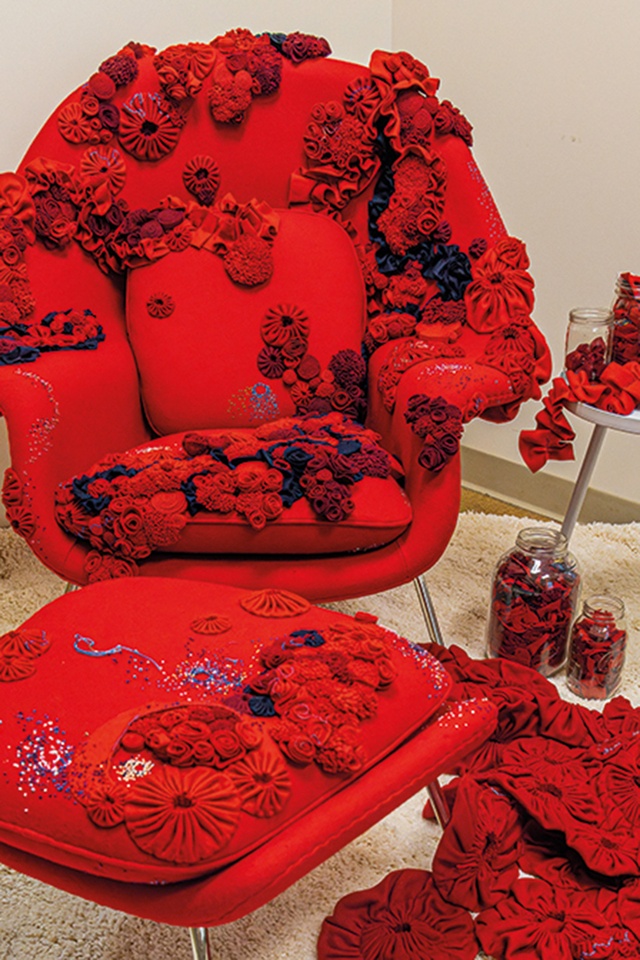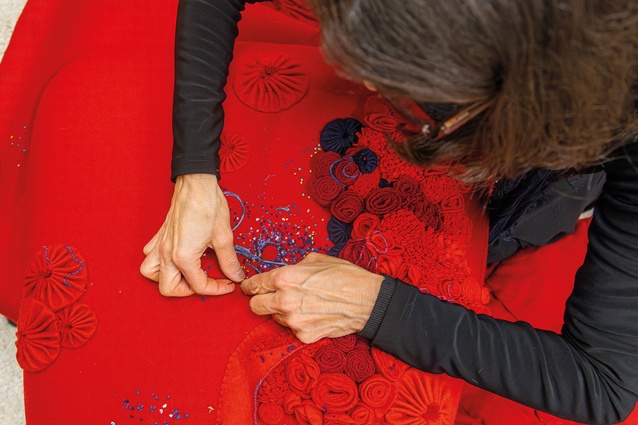Exhibition: Womb Chair Speaks
As part of International Women’s Day, 8 March, the University of Auckland Creative Arts and Industries, School of Architecture and Planning hosted a talk on the Womb Chair, designed by renowned mid-century modernist architect Eero Saarinen.
Initially commissioned by Florence Knoll in 1948, Saarinen’s Womb Chair challenged the conventions of chair design of its time. It pushed the boundaries with its innovative use of technologies: a departure from the traditional techniques of the era. This allowed for a form and functionality that deviated from traditional prescriptive norms, marking a significant shift in design philosophy.
A symbol of Mid-Century design, this chair has, historically, been associated with sexualisation, especially catering to the fantasies of male consumers. This was a reflection of the societal norms of the midcentury era, a time when corporate offices were dominated by white males and women’s roles were often marginalised. The Womb Chair was widely seen within these interiors; its image frequently graced the pages of Playboy magazine, another bastion of mid-century white male culture.

The original concept driving the design of the Womb Chair was to fulfil Knoll’s brief of her innate longing for unrestricted comfort, as an oasis of calm. Saarinen wanted to design the Womb Chair in response to his belief that people still longed for the unbound comfort and security they felt in the womb, even long after they had left it behind. During the Modernist period, ornamentation was removed and the domestic arts and female expression became muted.
As part of Kirin Makker’s pedagogy of investigating social power and architectural spaces,1 this artistic, activist and feminist project aims to highlight women’s hidden service within the realm of male creativity. The Womb Chair Speaks, as object, seeks to reclaim space usually associated with white masculinity by situating it in environments of collective creation and dialogue. A new chair was used over a three-month period, with groups of women who stitched, punctured and added handcrafted textile elements to the chair as part of participatory and interactive workshops and sewing circles. The chair, as an object, maintains its integrity with its original purpose of sitting. However, a different occupation is to be felt with this reworked Womb Chair; the comfort provided is transient, necessitating eventual adjustment by the occupant, thanks to the knobbly nature of hand-sewn additions.
The idea of slow scholarship, bridging methodologies with critical space theory, developed the aggregate of textiles from the original smooth, static nature of the chair. Participants exchanged sewing techniques and anecdotes, gradually infusing the chair with a new language and fostering a richer understanding of the womb.
The colour red is to be read as a symbol of menses, and the redesigned chair is to be viewed as a collective creation, as a stitched sculpture depicting the intricate textures of uterine tissue, uniquely marked by scars, cysts, adhesions and fibroids. Through this transformation, Womb Chair Speaks a new language of the womb, typically hidden from view, yet this project reveals decades of societal and physical challenges. Womb Chair Speaks is to make visual the spectrum of womb experiences that can encompass pain, violence and loss of a fertile space that is traditionally seen as a symbol of compliance and objectification. Instead, it now emerges as a site of resilience, housing complex narratives and memories. In this new form, Womb Chair Speaks defies patriarchal norms and finds its provocative new voice.
As the chair undergoes collaborative reupholstery, it redefines, reconfigures and re-imagines the womb as a dynamic organ in action, navigating space and time. This project challenges the conventional portrayal of the chair as a static object, impregnating it with vitality and agency reminiscent of the biological processes of the womb. Over time, the chair becomes a focal point for conversations and insights centred on women’s stories and shared experiences.
Accumulating embodied labour, layers of memory, narrative depth and resilience, the new Womb Chair emerges as a rich tapestry of stories. In this iteration, the Womb Chair resonates with feminist voices, echoing the collective discussions, shared knowledge and collaborative efforts that shape its transformation.
References
1. Kirin Makker is a Professor of American Studies at Hobart and William Smith Colleges in Geneva, New York and an endowarrior. She is an artist trained as an architect and a scholar in critical space theory.











